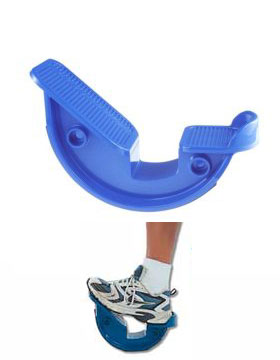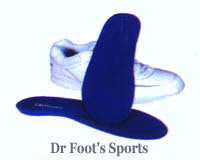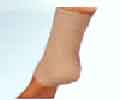Achilles Pain Tendonitis & Football
May 20 2008 | Articles
Overview of the Achilles Tendon
The Achilles tendon is located just above the heel which is the continuation of the Gastrocnemius and Soleus calf muscles. It forms the lower part of the calf and attaches to the bone of the heel. It functions to produce force in the calf muscles in order for individuals to effectively walk or run. It is the strongest and largest of the tendons in the human body since it can actually support individuals’ full body weight and more.
What is Achilles Tendonitis?
Achilles Tendinopathy or Achilles Tendonitis is characterized by pain in the Achilles tendon which radiates to the lower calf and heel. It is a common medical condition among footballers since the tendon is used frequently resulting to wear and tear. The tendon experiences degeneration which is also called tendonosis.
Achilles Tendonosis is one of the primary manifestations of Achilles Tendinopathy wherein small lesions inside the tendon are present but the tissues are not inflamed. If the tissues are inflamed, the condition is known as Tendonitis.
The lesions reduce overall strength and stability of the Achilles tendon and chances are that it could rupture with more activity. Tendonitis is more common among footballers and can range among individuals with varying ages.
The usual symptom of Achilles Tendinopathy is pain which becomes more severe during physical activity. The area may also be sensitive to touch and feels stiff after lying down for a long period. The affected tendon can also appear larger compared to the other unaffected one. Compared to Achilles Paratendinopathy, Achilles Tendinopathy patients experience pain when moving the ankle up and down. The Achilles Paratendon does not move during ankle movement.
Treatment
For pain and swelling, ice packs and Achilles strap help a lot in controlling inflammation. A medical doctor and physical therapist will provide medications that should be taken to reduce inflammation. Strengthening and rehabilitative exercises should be done after the initial acute stage.
If all else fails than surgical intervention may be necessary. Surgery may be indicated to remove the degenerated areas of the tendon and restore the tendon to optimum tensile strength. It takes about three to six months before the individual can resume physical activities and sports.
Prevention Tips
Running activities and other sports which put a toll on the Achilles tendon should be monitored and controlled in order to ensure that the tendon has fully recovered before the next session. Stretching and strengthening exercises are crucial to keep the tendon stabilized and strong. It is a good idea to wear shock-absorbent insoles or to run on low-impact ground like grass to minimize pressure on the Achilles tendon.

View the Pro Stretch helps you stretch the achilles tendon
Football Rescue Recommends
Review: Ease the pain of Achilles tendonitis.
Experience immediate relief from Achilles tendonitis and return to your normal activity level. Achilles Pain commonly occurs from shearing and stretching forces placed on the Achilles tendon. Over Pronation (rolling over of the foot) causes extra strain on the tendon.
Dr Foot Insoles control excess pronation and significantly reduce the shearing and stretching forces on the Achilles tendon, thereby providing relief from Achilles Pain.
![]()
![]()
![]()
![]()
![]() 5 Star Rating
5 Star Rating

Read more about Achilles Pain Insoles from £10 with Free Postage and Packaging
Customer Review
“I am extremely pleased with the relief from my Achilles pain as the result of using your product…Thanks so much for developing such an inexpensive and alternative insole to the normal….outrageously expensive alternative.”
Keiko Walker
Manchester, UK
Other Treatment Options

Achilles Heel Pad, £25
